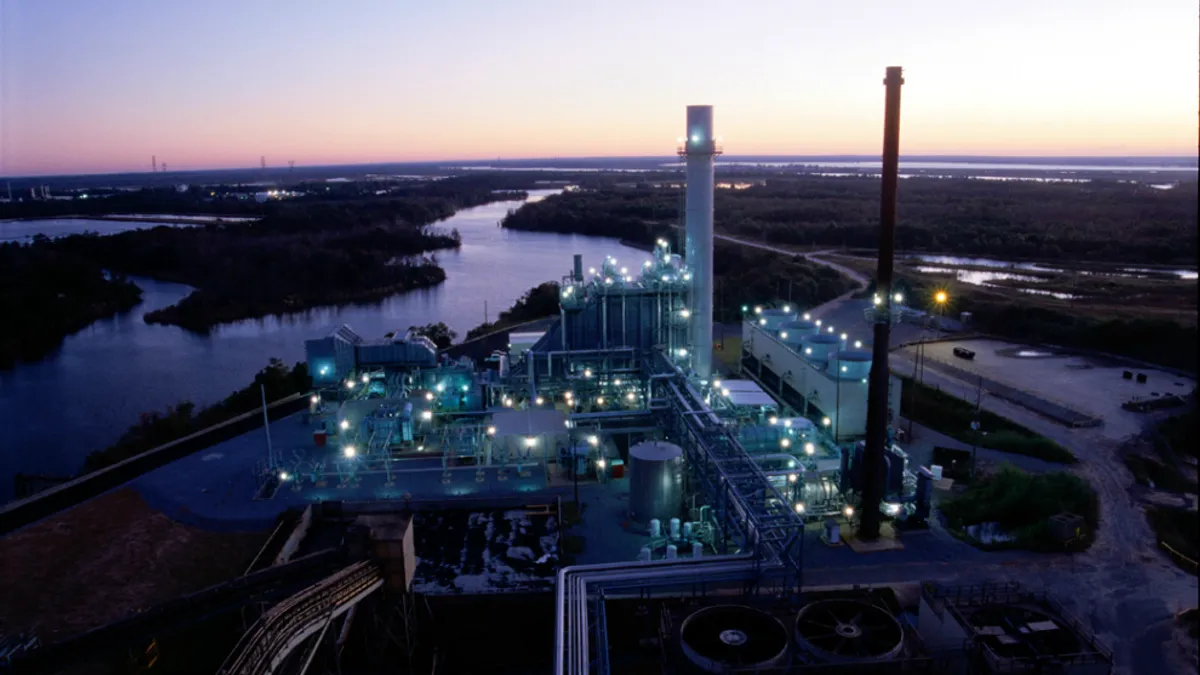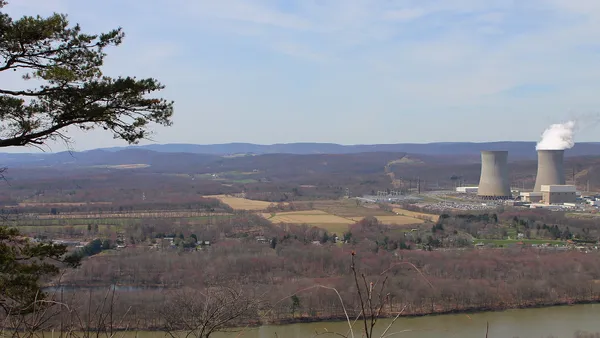With renewables and natural gas the increasingly dominant players in new U.S. electricity generation, the choice of which kind of natural gas plants to build is becoming crucial.
In 2013, the U.S. built no new nuclear and 1,543 megawatts of coal but 7,285 megawatts of natural gas, 1,559 megawatts of wind, and 3,897 megawatts of solar. In the first three months of 2014, the U.S. added no new nuclear or coal but did add 90 megawatts of natural gas, 427 megawatts of wind, and 584 megawatts of solar.
“Base load power is the foundation of the grid,” explained GE Power & Water Advanced Gas Turbines GM Guy Deleonardo. “But when the sun is shining or the wind is blowing you take them because there is no fuel cost. That drives the need for flexibility.”
“Wind and solar are in the control of mother nature,” said ABB Product Manager Richard W, Vesel. “Wind can shift in a minute, clouds can obscure solar in a fraction of a minute.”
Nuclear and coal have little flexibility, Deleonardo and Vesel agreed.
“The advantage of natural gas is that plants can be built in a year or less in all kinds of different configurations,” Vesel said.
What type of natural gas turbine to choose?
Two factors, Deleonardo said, are at the heart of the question of what type of natural gas turbine to choose: The amount and economics of needed capacity and the plant’s mission.
California has a high penetration of renewables and natural gas plants on its grid. And mandates to shutter once-through cooling fossil facilities and grow renewables to 33% have leaders carefully studying options.
A resource’s flexibility is in its ability to meet three types of “operational needs,” according to the California Independent System Operator:
- steep up or down system ramps that can happen many times a day and vary by month or season;
- sharp up or down intra-hour system variability that can vary by month or season; and
- second-to-second regulation service to maintain system frequency.
“The need today is to retrofit existing plants with new gas turbines like the ones GE makes with quicker start and faster ramp capabilities and higher efficiency,” acknowledged Center for Energy Efficiency and Renewable Energy Executive Director V. John White. “They make it possible to NOT use them when renewables are available and bring them on to meet peak load.”
GE and Alstom are among the leaders in the design of highly flexible, high capacity, combined cycle gas turbines capable of providing fast ramping and load following. They are “combined cycle” because natural gas is burned in one cycle and in another cycle the system’s exhaust heat is recaptured and used to heat water into steam that drives the turbine.
GE’s F-class and H-class products can be configured in 400 megawatt and larger sizes, start in fifteen minutes, change load quickly, and back down economically. Alstom’s GT 24, 26, and 13 class turbines are similarly capable in capacity, ramp rate, efficiency, and cost.

But none of these meets the need for second-to-second regulation. That is what aero-derivative peaker turbines like GE’s LMS100 or Alstom’s GT11 do.
Peakers vs. combined cycle
“Some people call peakers simple cycle,” explained SolarReserve CEO Kevin Smith, who built gas plants before taking on building solar power plants, including Rocketdyne-designed solar power towers with molten salt storage that provide dispatchable electricity.
“A peaker is like a jet engine,” Smith said. “To make it more cost effective and efficient, you put in the back end, with heat recovery. That makes it more expensive and more efficient. But slower to start.”
To be cost effective, combined cycle plants need to run 30% to 70% of the time. But peakers are designed to run less than 10% of the time, only at very high demand periods, Smith said. “When you are at the edge of what the system can provide, you fire up your peakers.”
A combined cycle plant could have total capital costs of $0.07 per kilowatt-hour to $0.08 cents per kilowatt-hour, if natural gas prices remain at $5 per MMBTU, Smith estimated.
A peaker’s fuel cost will be the same and its capital costs will be less. But those costs are for much lower capacity and far fewer hours of operation, resulting in a $0.12 per kilowatt-hour or $0.15 per kilowatt-hour electricity price, though, only at peak demand periods when electricity prices are high, Smith acknowledged.
Combined cycle plants are typically financed by utilities, Deleonardo said. But in a market near a lot of wind or solar with high peak demand, an independent power producer may build a peaker. “It is a riskier investment but it has the agility to get high returns from providing regulation and peak shaving.”
“Gas is a bridge,” Vesel said. “It is more economical to build new flexible gas than to retrofit existing coal and nuclear generation and the need for that will last through the lifetime of anything built now.”
“The current vision is of dispatch,” White said, “but the vision should include more than dispatch and will take a lot of new thinking. Load can be met with other options, like energy storage and demand management. New fast natural gas should not be the default option.”














